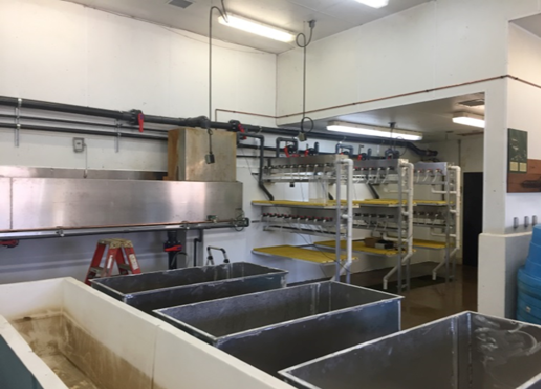BY OREY ECKES, GENOA NFH

Photo Credit: USFWS
Over the last few months, hatchery staff members have been finalizing additional renovations of the holding house from the 2018 walleye production season. Due to increased demand for more walleye eggs from state, tribal and federal partners, the hatchery had increased holding and hatching capacity for walleye eggs and fry in 2018. The modifications of hatching tanks and rearing space allowed the hatchery to collect nearly 70 million walleye and sauger eggs from the Upper Mississippi River for stocking in the spring of 2018.
Upgrades and renovations consisted of: A new aluminum head tank that was installed allowed for a larger available water volume to supply fish rearing tanks, increased particulate settling time and improved oxygenation. New oxygen lines had also been added to improve delivery of oxygen, create more working space, and allow for easier access to the oxygen supply tanks. Maintenance staff member, Jeff Lockington fabricated and installed egg incubation tanks and fry hatching tanks.
The new egg incubation setup allowed for incubation of over 60 million walleye eggs. Zach Kumlin, also a part of the Genoa National Fish Hatchery (NFH) maintenance team, installed flow meters wired to a control box (PLC) to allow biologists to review and manipulate flows for walleye egg treatments. He also installed a peristaltic pump for chemical treatment of eggs to reduce loss of eggs from fungus.
In 2019, staff members are hard at work installing a larger pump to increase water volume and are incorporating a sand filter into the system to remove particulates such as iron, which bind to eggs and newly hatching fry. These new modifications for 2019 will help increase eye up percentages, resulting in better survival of eggs and newly hatched fry. This new setup will allow the hatchery to produce and stock more walleye for recovery and restoration efforts. Genoa NFH staff will be on the Upper Mississippi River this spring in an effort to collect enough walleye eggs to meet our partners’ requests.
